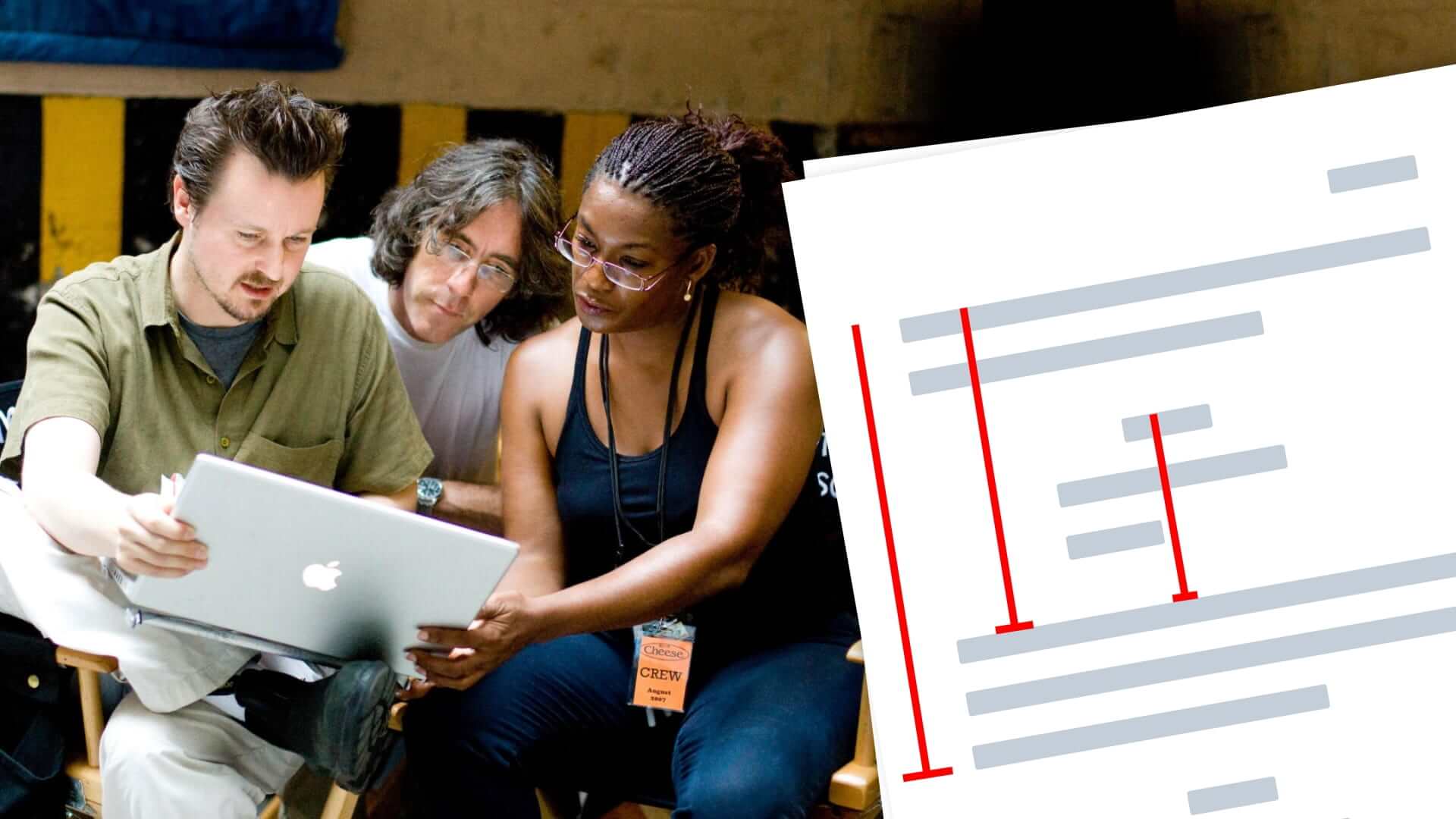What is a lined script? How do you make one? And what is it used for? Read on to find the answers to these questions and step-by-step instructions for lining a script. Let’s start with a quick definition. A lined script is a separate version of the screenplay that includes vertical lines denoting how much of a scene each individual shot covers. Now that we know what it is, let’s find out why it is important.
How to Line a Film Script
Why line a script?
The main purpose of lining a script is to ensure enough coverage has been shot for each scene. No director ever wants to wind up in a situation where they get all the way to the editing room and realize they forgot to shoot coverage of an actor for a line of dialogue.
Lining a script helps prevent running into this issue.
Lining shots in a script
A lined shooting script can also be useful for the editor when in post-production. During principal photography, the script supervisor can circle takes right on their documentation when the director is pleased by them. And the editor can then use these “circle takes” to keep track of the director’s preferred takes when assembling the rough cut.
A lined script can work in tandem with a shot list to maximize the effectiveness of both tools. When it’s time to put together your next shot list, you can do it with StudioBinder. It’s free to get started.
How to Make a Lined Script
Step 1: Setup your document
For many years, scripts were always lined by hand but, these days, a script can also be lined digitally using filmmaking apps. One way is not better than the other, so feel free to experiment with both approaches and figure out which works best for your personal preferences. The following video offers a glimpse into one way to line a script using software, if you choose to go that route.
Lining a script with the LockitScript app
If you plan to line by hand, make sure you have a clean, printed-out copy of the script handy. Ready a pen (and have a backup ready to go), and be sure to have a ruler handy to make nice, straight lines. Some script supes prefer to line a script with multiple colors while others stick to black ink alone.
When lining a script on set as a script supervisor, it can sometimes be valuable to have a clipboard with you, as there are times where a table or other flat surface may be a luxury not afforded to you.
Creating a Lined Script
Step 2: Observe the scene carefully
As a director, it may be helpful to create a lined script to ensure that you have coverage for all parts of a scene before getting to set. Lining a script in pre-production can be instrumental for beginner filmmakers and on low-budget, indie productions, though pre-pro lined scripts do not see much use in the professional filmmaking world.
How a making a lined script in pre-pro can help small crews
On set, the script supervisor is responsible for lining a script as takes are recorded. This task is carried out in addition to watching for continuity. These two tasks on their own might not sound too complicated, but when done simultaneously, it can become a real challenge.
Watching a scene carefully and, even more importantly, watching each individual shot carefully is instrumental in creating an accurate lined script.
How to Line a Script
Step 3: Line it!
Now, all that’s left to do is line the shooting script. If you watched the embedded videos above, then you should already have a pretty good idea of how this is done. The video below also offers clear instructions and a practical demonstration of the process.
How to line a script in action
For each shot that is recorded, draw a vertical line along the page, indicating which portion(s) of the scene were covered within that shot. A squiggly line is used in place of a straight line to indicate dialogue spoken by a character who is off screen during the shot.
At the top of each line, you label the shot. The specifics of these labels can vary slightly from supervisor to supervisor. But the most important piece of information to include is the shot number as indicated on the slate.
Other information for these labels includes the type of shot, the number of takes, and the subject’s name if a shot focuses on a particular character.
UP NEXT
Script Supervisor Forms & Resources
Congratulations, you now know how to line a script. But, the act of lining a script is far from all that a good script supervisor needs to know. If you plan on working as a script supervisor, be sure to learn the rest of a script supe’s duties and familiarize yourself with all of the necessary resources for the role, coming up next.
Up Next: Forms & Resources →
Showcase your vision with elegant shot lists and storyboards.
Create robust and customizable shot lists. Upload images to make storyboards and slideshows.
